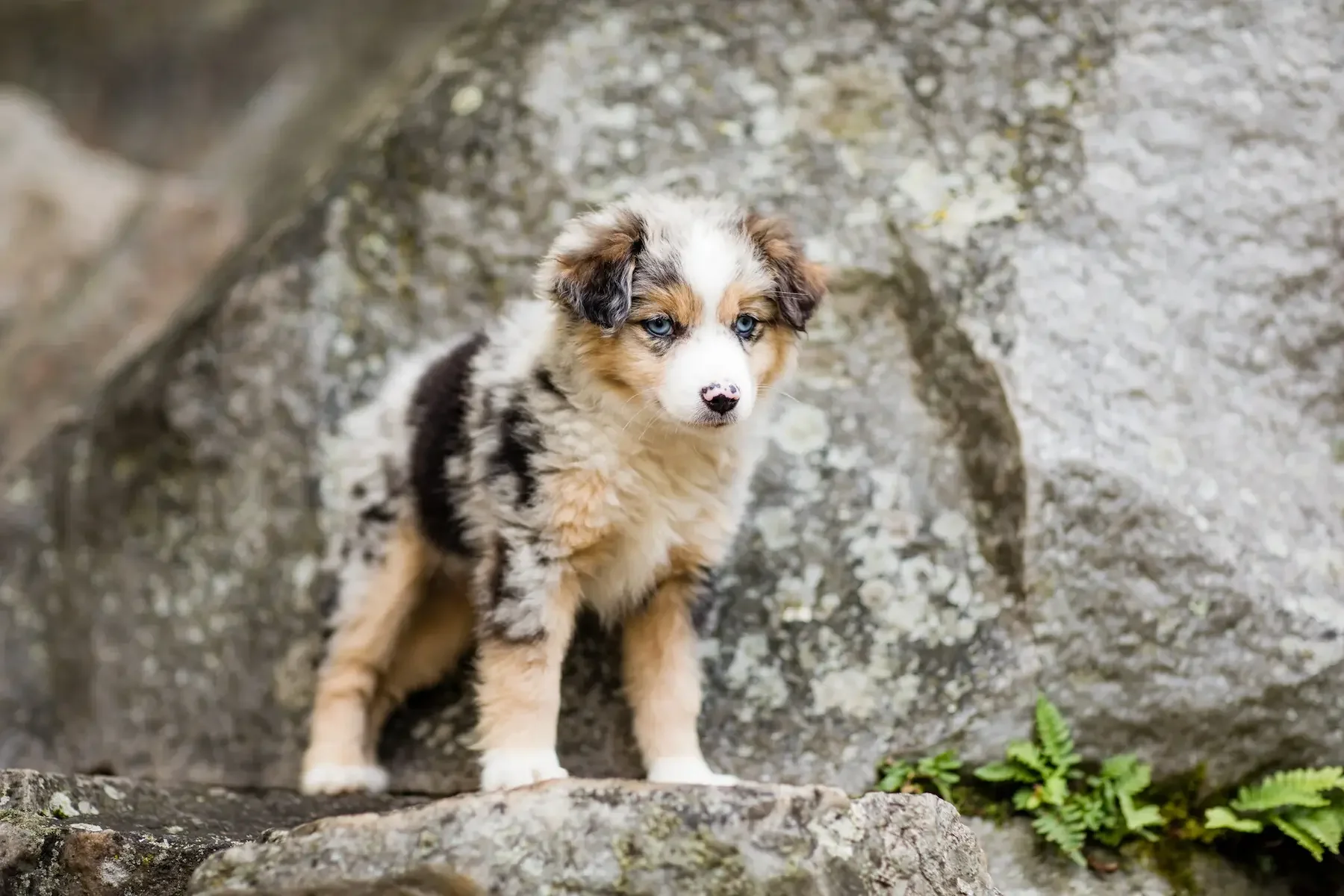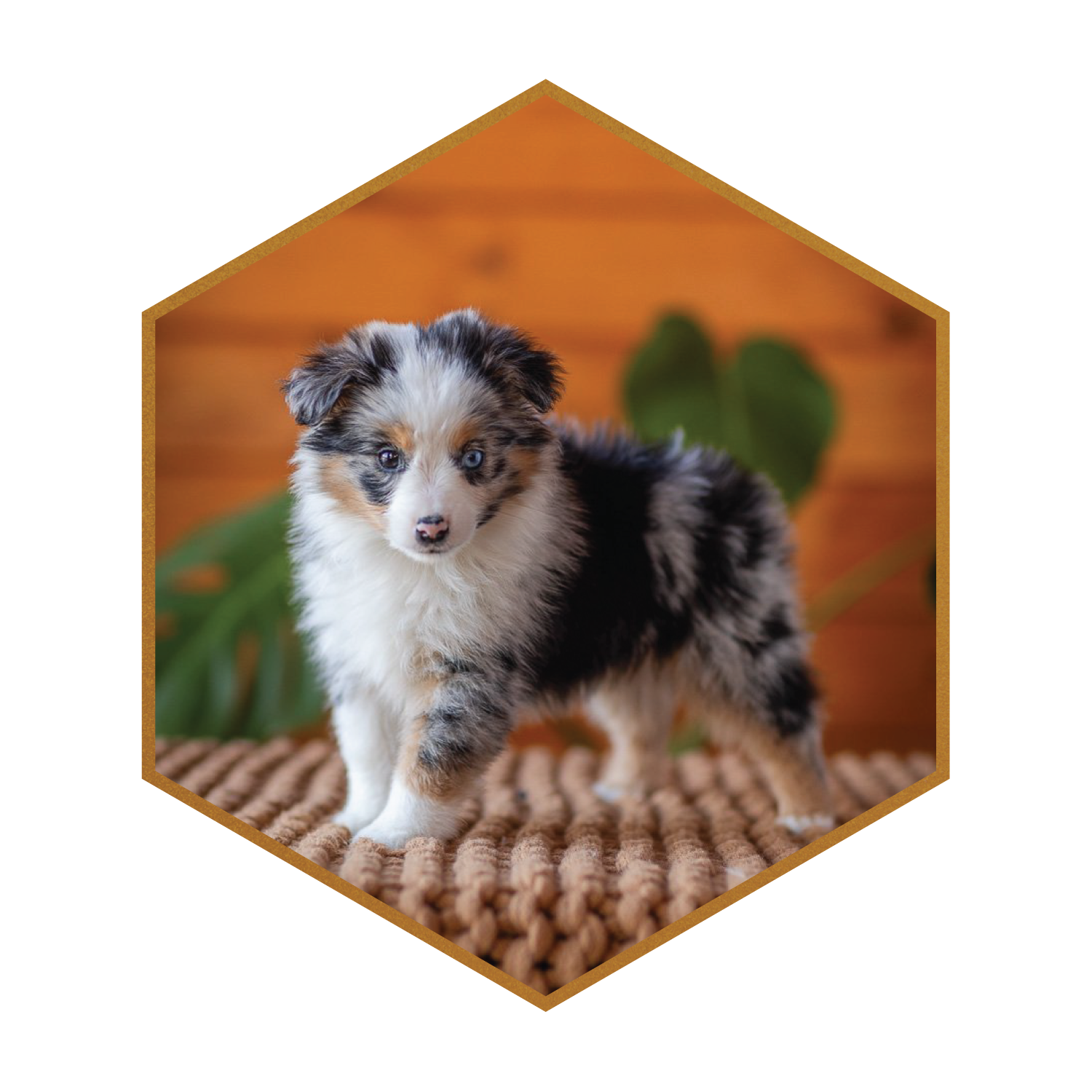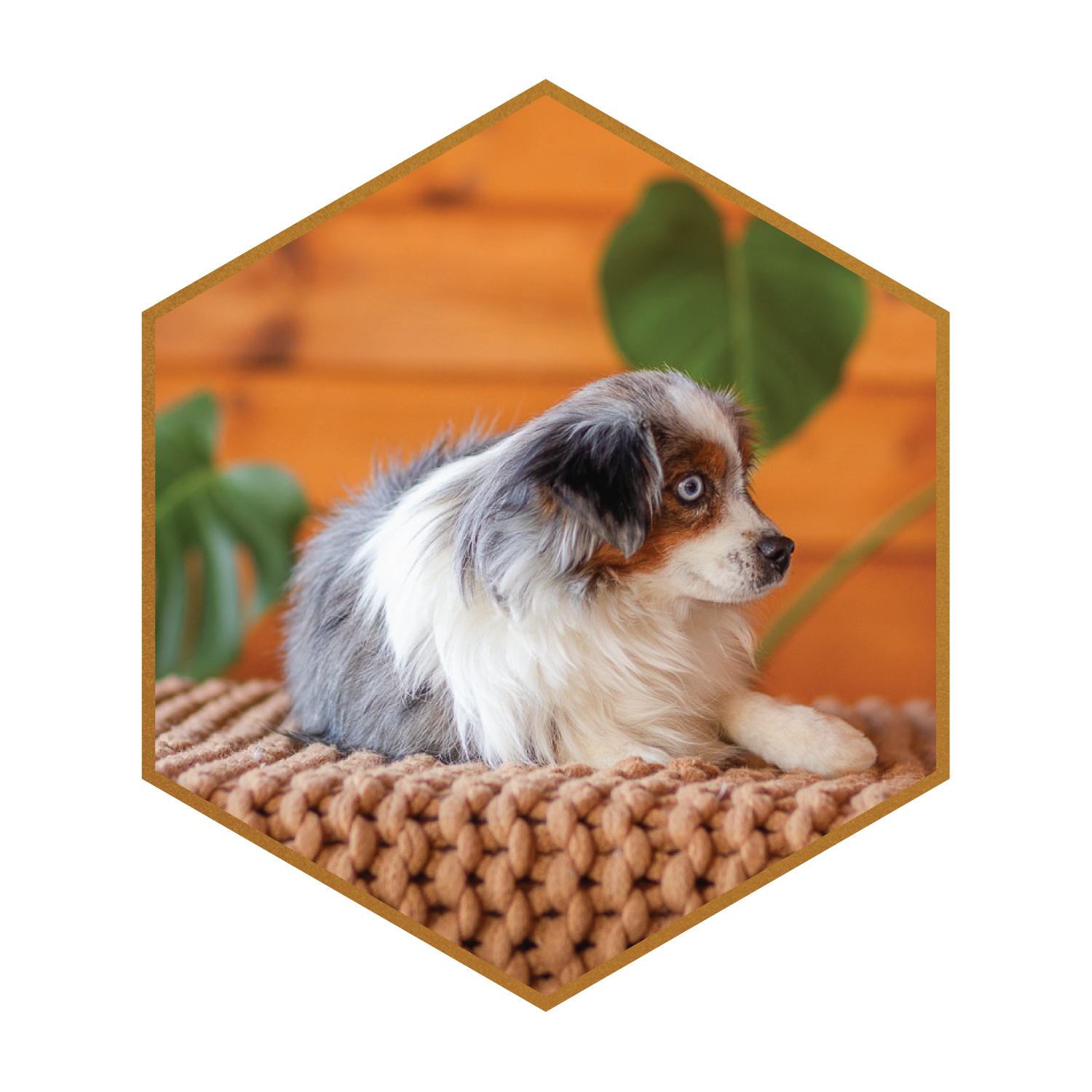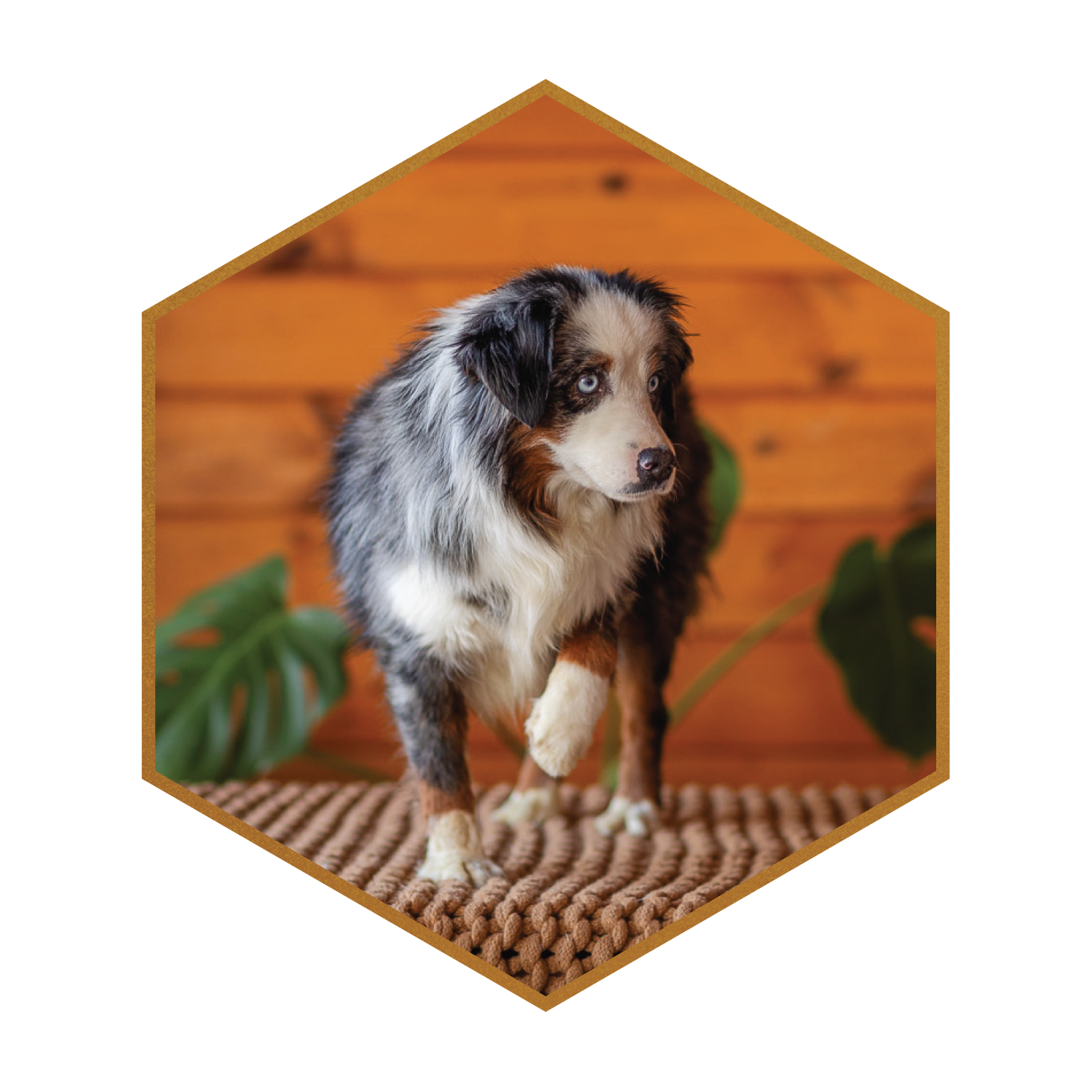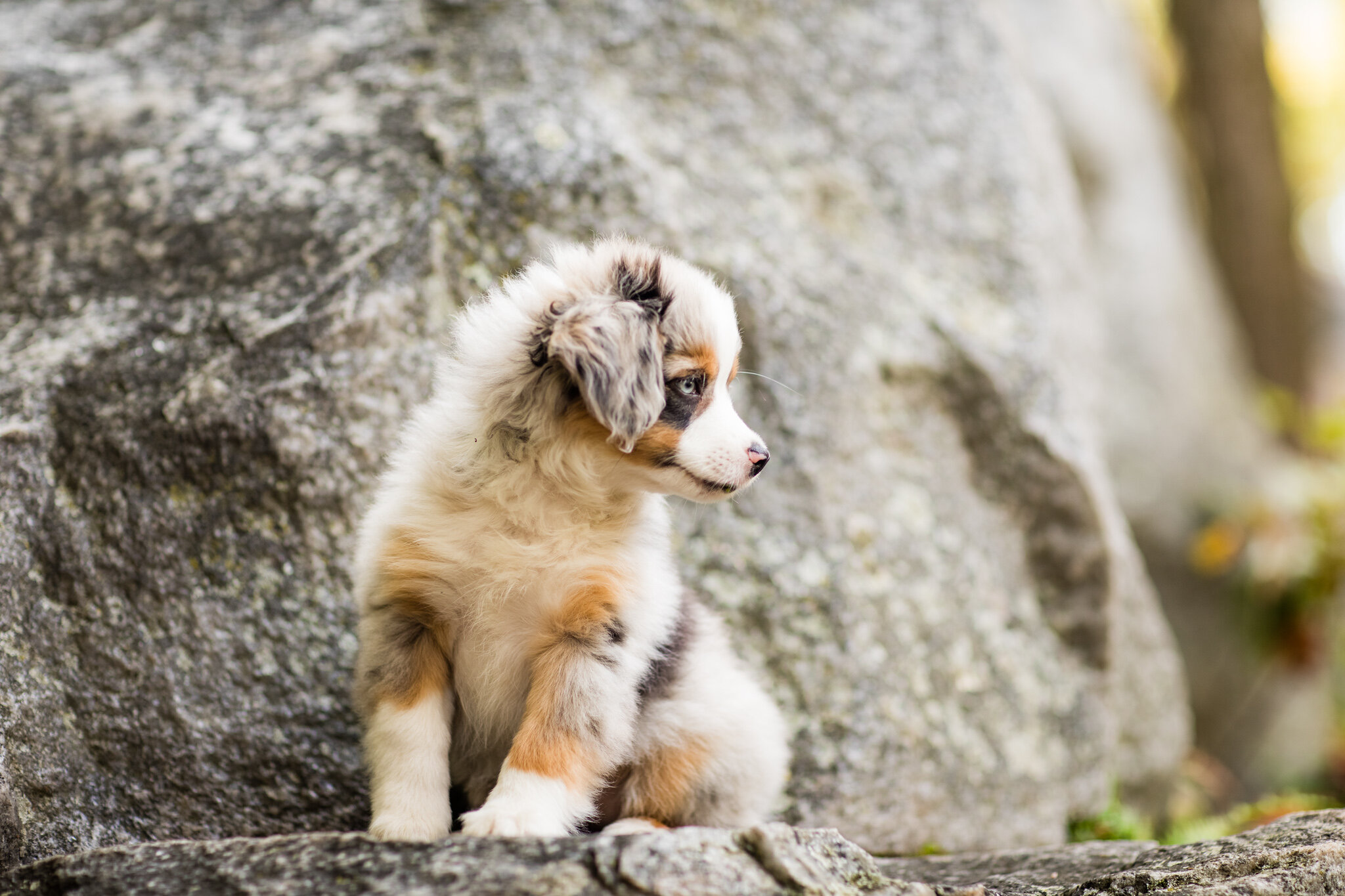The Miniature Australian Shepherd: Origins, Development, and Modern Popularity
Abstract The Miniature Australian Shepherd, or "Mini Aussie," is a smaller counterpart to the Australian Shepherd, developed in the mid-20th century to retain the intelligence, agility, and versatility of its larger predecessor. This article traces the breed’s origins, from its development in California to its recognition as a distinct breed, and highlights its growing popularity as both a working and companion dog.
Introduction Miniature Australian Shepherds are celebrated for their compact size, boundless energy, and unwavering loyalty. Although they share a history with the standard Australian Shepherd, Mini Aussies were intentionally bred to meet the needs of dog enthusiasts seeking a smaller, equally capable herding and companion dog. This article explores the breed’s creation, development, and rise in popularity, showcasing its adaptability and appeal.
Origins of the Miniature Australian Shepherd The Miniature Australian Shepherd traces its roots to 1962 when 16-year-old horse enthusiast Sandy Travis began selectively breeding smaller Australian Shepherds. Her goal was to develop a more compact herding dog that could also serve as a companion animal. Travis’s breeding program began in California, where smaller Australian Shepherds were carefully chosen for their size, temperament, and working ability.
The development of the Miniature Australian Shepherd reflected a growing demand for versatile dogs that could excel in urban and suburban environments while retaining the intelligence and work ethic of the standard Australian Shepherd. These smaller dogs quickly gained popularity among equestrian circles, as they were the perfect size for traveling to horse shows and ranch events.
Breed Refinement and Recognition The Miniature Australian Shepherd’s formal development involved crossing smaller Australian Shepherds within controlled breeding programs. Early breeders prioritized:
Size: Maintaining a compact yet sturdy frame ideal for agility and mobility.
Temperament: Ensuring the breed retained the intelligence, loyalty, and trainability of the standard Australian Shepherd.
Herding Ability: Preserving the breed’s instincts and versatility as a working dog.
In 1980, the Miniature Australian Shepherd Club of the USA (MASCUSA) was established to promote and standardize the breed. Efforts to gain wider recognition culminated in 2011 when the American Kennel Club (AKC) officially recognized the Miniature Australian Shepherd as the Miniature American Shepherd, emphasizing its distinction as a unique breed.
Physical Characteristics The Miniature Australian Shepherd retains many physical traits of the standard Australian Shepherd, including its striking coat and athletic build. However, it is more compact, standing 13-18 inches tall and weighing 20-40 pounds. Key characteristics include:
Coat: A double coat that is weather-resistant, available in colors such as blue merle, red merle, black, and red, often with white or tan markings.
Eyes: Expressive eyes that may be blue, brown, amber, or exhibit heterochromia.
Tail: A natural bobtail or docked tail, depending on the breeding line.
Modern Roles and Popularity Miniature Australian Shepherds have grown in popularity due to their adaptability and suitability for various lifestyles. They excel in a range of roles, including:
Companion Animals: Their smaller size and friendly nature make them ideal for families and individuals.
Service and Therapy Dogs: Their intelligence and trainability suit them for roles in therapy and assistance work.
Sports and Competitions: Mini Aussies shine in agility, obedience, and herding trials.
Herding Dogs: Despite their size, they retain the instincts needed to manage livestock effectively.
Challenges in Ownership While Mini Aussies are highly adaptable, they require active and engaged owners who can meet their physical and mental needs. Without sufficient exercise and stimulation, they may develop behavioral issues, such as excessive barking or destructive tendencies.
Health Considerations Miniature Australian Shepherds share some health concerns with their larger counterparts, including:
MDR1 Mutation: Sensitivity to certain medications.
Collie Eye Anomaly: A hereditary eye condition.
Ethical breeding practices and health testing are essential to minimize these risks and ensure the breed’s overall well-being.
Conclusion The Miniature Australian Shepherd’s journey from California breeding programs to international recognition highlights its adaptability, intelligence, and enduring appeal. As a smaller yet equally capable counterpart to the standard Australian Shepherd, the Mini Aussie has secured its place as a beloved companion and working dog. With dedicated breeding and responsible ownership, this remarkable breed will continue to thrive for generations to come.
References
Miniature Australian Shepherd Club of the USA. (n.d.). Breed history. Retrieved from https://www.mascusa.org
American Kennel Club. (n.d.). Miniature American Shepherd History. Retrieved from https://www.akc.org
Hartnagle, J. J. (1985). All About Aussies. Loveland, CO: Self-Published.
Travis, S. (1992). The Development of the Miniature Australian Shepherd. Self-Published.
Robertson, B. (2015). Origins of the Australian Kelpie. Ballan, Victoria, Australia: Self-Published.

